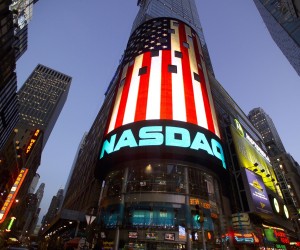
The Nasdaq Composite is widely recognized, but a look under the hood reveals a rather bizarre benchmark.
Most summaries of activity in financial markets are distilled down to three numbers — the changes in the Dow Jones Industrial Average, S&P 500, and Nasdaq Composite Index. Because these three benchmarks are so ubiquitous, they are often perceived to be comprehensive gauges of the stock market.
In reality, however, there are some significant limitations — even beyond the Dow’s price-weighted methodology. The Nasdaq Composite, which consists of all stocks listed on the Nasdaq Stock Market, has its fair share of quirks resulting from the underlying methodology.
The Nasdaq is one of two primary stock exchanges (in addition to the New York Stock Exchange) where companies may list their shares in the U.S. Because the choice between exchanges is somewhat arbitrary — it has no impact on the operations of the company or availability to investors — an index that is based on this distinction results in a somewhat arbitrary basket of stocks.
The Nasdaq has historically been a popular destination for tech stocks, and as a result the Nasdaq Composite Index has a heavier allocation to this sector than other indexes. (The tech sector represents about 20 percent of the S&P 500.) The five largest tech companies listed on the Nasdaq form nearly one-quarter of the Nasdaq Composite ETF (ONEQ).
Data Source: Fidelity
But the Nasdaq Composite is not exclusively a tech benchmark; hundreds of non-tech companies list on the Nasdaq as well. In fact, the tech sector makes up less than half of the ONEQ portfolio:
Data Source: Fidelity
As a result of the index methodology, several of the largest companies in the world are excluded. Exxon Mobil (XOM), Johnson & Johnson (JNJ), Berkshire Hathaway (BRK.B), Pfizer (PFE), and AT&T (T) are all worth at least $200 billion, but aren’t included in the index because their shares are listed on the NYSE.
Also excluded from the Nasdaq Composite are tech companies that have chosen to list on the NYSE, including LinkedIn (LNKD), Twitter (TWTR), and IBM (IBM):
So the Nasdaq Composite is tech-heavy, but excludes some of the biggest names in the sector in favor of stocks like Dollar Tree (DLTR), Costco (COST), and Tractor Supply Company (TSCO). It has moderate weightings to Consumer Discretionary, Health Care, and Financials stocks, but the Telecom, Materials, Energy, and Utilities sectors are close to nil.
The Nasdaq Composite endures as a widely-used market barometer because of its history and brand. And the ETF linked to this index has performed quite well; ONEQ has an annualized return of nearly 20 percent over the past five years. As investment strategies go, however, it’s the grab bag of the ETF world.
About the Author: Michael Johnston
Michael Johnston is senior analyst for ETF Reference, and also serves as COO of parent company Poseidon Financial. His investment expertise has been featured in The Wall Street Journal, Barron’s, and USA Today, among other publications. He resides in Chicago.


Comments